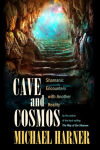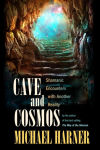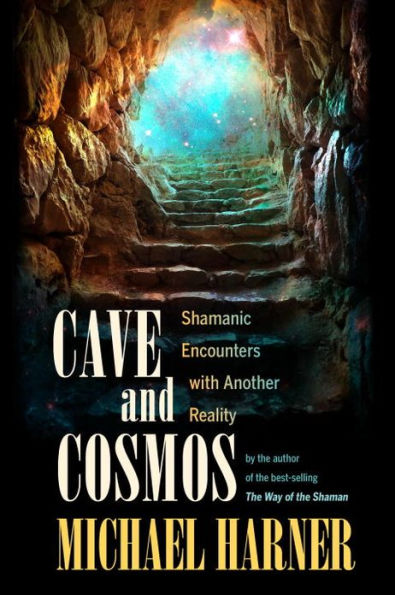Read an Excerpt
Cave and Cosmos
Shamanic Encounters with Another Reality
By Michael Harner North Atlantic Books
Copyright © 2013 Michael Harner
All right reserved. ISBN: 9781583945469
“Spirit Power and the Cave” by Michael Harner An excerpt from the book Cave and Cosmos: Shamanic Encounters with Another Reality PowerIn February 1957, a small band of Shuar (Jívaro) men and I became lost after trekking for weeks through mountainous Upper Amazon rainforest. Tired, disoriented, and hungry, we finally ran into a friendly group of Shuar hunters who told us that we had been going in exactly the wrong direction. They shared a bit of their provisions and pointed the way toward the Shuar neighborhood we sought.
Leaving the hunters, we soon came to a small but raging river, fed by recent rainstorms in the Andes to the west. This was an obstacle to our further progress, so we waited for several days for the waters to go down, without luck. My companions waited quietly and seemed unperturbed by the situation while I became increasingly impatient, for I knew it was possible to construct rafts of balsa logs and to get across using makeshift guadua bamboo paddles. Several times I proposed to my companions that we should wait no longer for the water to recede but instead make rafts and paddle over to the other side. Repeatedly they declined to do so.
Growing increasingly impatient, I finally challenged my companions, pointing out that they called themselves great warriors but were unwilling to cross the river. Without comment, they shortly constructed three balsa log rafts, and we prepared to make the crossing. The river was about 150 feet across, and the first raft, paddled by two of the Indians and carrying some of our baggage, made it to the other side. Then I went on the second raft with two paddlers. We made it about three-quarters of the way across and then were swept down into the rapids where the raft overturned, dumping us into the raging torrent. With extreme effort we were able to swim the remaining distance and survive. The third raft made it across.
As we collected ourselves and rested before hiking farther, I remarked to them, “That was a pretty close call. I guess we are lucky to be alive.”
I was expecting some agreement, at least tacitly, but my companions silently remained standing there like stereotypes of stoical Indian warriors. They gave the impression that this had been nothing, acting completely unfazed.
Their lack of reaction perplexed me, because these were the same men who were reluctant to cross the river despite my urging. So I undiplomatically pointed out that they had not wanted to make the river crossing, and now they were acting as if it were nothing, even though they had been afraid to cross.
They exchanged glances with each other but said nothing. Then one of them, whom I knew particularly well, finally replied. He said, “Well, you see, we were not really afraid to cross the river because we cannot die. But we did not know about you!”
At that moment, the perilous Amazon river crossing opened a door to important spiritual knowledge. After that I gradually learned from the Shuar that they were protected by spirit power against all forms of death except epidemic disease. I also learned that such power can leave one. Thus unprotected, people do indeed die. Therefore, before leaving on precarious missions, people watched for signs as to whether they still possessed the protective powers provided by their guardian spirits. If the signs were negative, they did not depart on such a mission, especially if it involved an attack on an enemy.
Like the Shuar, indigenous shamans worldwide know that spirit power is basic to one’s health, survival, and ability to heal others. Without this power, one is not resistant to illness or misfortune. In traditional shamanic cultures this awareness permeates the daily life of virtually everyone.
Jaime de Angulo, who spent time with the Atsugewe people of Northern California in the early twentieth century, said it well: “Without power you cannot do anything out of the ordinary. With power you can do anything.”
The power is like a force field that permeates the shaman and permits him or her to use the power to help and heal others. The shaman’s idea of power is similar to our concept of energy, yet it includes more: energy as well as intelligence and self-confidence. Spiritual power is not political power or power over others. It is power essential to one’s health and ability to survive.
Spirits At this point let me explain what I mean by a “spirit.” As I have said elsewhere, a spirit can be defined as “an animate essence that has intelligence and different degrees of power, that is seen most easily in complete darkness and much less frequently in bright light, and in an altered state of consciousness better than an ordinary state. In fact, there is some question whether you can see it in an ordinary state of consciousness at all.”
In other words, not all spirits have significant power. Those spirits that do are often referred to by shamanic peoples simply as “powers.” Particularly important in indigenous cultures are the guardian spirits that provide protective power to the people they love. When properly invoked by a shaman, such a power also provides active healing assistance for curing illness and pain in the shaman’s patients. Through experience, the shaman has learned which spirits are powerful.
Power is acquired in different ways. In Siberia and parts of South America it was common to gain personal power after suffering from a severe illness that put someone at death’s door. If that person suddenly had a miraculous recovery, the local community concluded that a spirit had compassion for the person and interceded to relieve him or her of the illness. In such an event, people in the community typically would go to the revived and cured patient to see if the healing power could be used to help another individual suffering from a malady, usually a similar one. In other words, the suffering of the ill person could evoke pity by a spirit. In this way, a shaman sometimes was created.
Seeking Spirit Power Ideally, one should not wait to become ill to aspire to gain this power. Members of traditional shamanic cultures understood this well and encouraged young people in good health to suffer voluntarily in order that ancestral spirits might intervene to help them by sharing their power. Much more than a healing energy, this power was seen as a force that would support people in daily life, helping them to avoid misfortune and hardship, and to achieve good outcomes.
Most famously, this acquisition of power occurred in the power quest, more commonly called the “vision quest.” It should be mentioned, however, that not all successful power quests involved achieving visions. For example, among the Southern Okanagan the seeker might not see the spirit but instead receive its power through an auditory experience, such as a song and words.
Most power quests were not something to be done by a sick person, but by one who was healthy and often relatively young. In a sense, it was a kind of spiritual life insurance to further an individual’s success and survival.
Spirit power could usually be sought by almost anyone in a variety of isolated places where ancestral and other guardians were known to reside. Such sites include mountaintops, the depths of a cave, a remote waterfall, the Arctic wilderness, particular canyons, local burial sites or ruins, a remote trail, and other locations. But one thing remained constant for success: the spirits had to be convinced that a power-seeking visitor to their haunts deserved help. When arriving at such a place, the visitor would usually sing or silently speak to the spirits there, asking for their assistance.
Suffering Voluntarily to Evoke Compassionate Help The quest took various forms. Regardless of culture, it commonly required seekers to prove themselves by suffering voluntarily, such as from fear, hunger, thirst, extreme cold or heat, and exhaustion. In shamanism, suffering is not a method of atoning for one’s “sins,” but a way of attracting the help of powerful spirits.
Among some Inuit of the Arctic, one way to have a successful quest for power was to spend four or five days in a special isolated igloo in the depths of winter without food or water. When the specified time elapsed, an elder, usually a shaman, opened the igloo and brought the person home. The igloo did not have even an oil lamp to heat it, so the suffering from extreme cold was combined with suffering from lack of water and food. It is reported that in some cases the person seeking power might be naked during this time of questing. A less life-challenging example is my own power quest among the Shuar that involved an exhausting climb up the forested eastern slopes of the Andes, a near-freezing bath below a waterfall, and no solid food allowed prior to obtaining a vision helped by the overwhelming power of datura (
Brugmansia sp.) juice.
Voluntary suffering for such power sometimes still occurs among Native American peoples of the Great Plains of North America, where the person seeking a vision and power typically first becomes dehydrated in the purification or “sweat” lodge. There the individual will intentionally suffer from the extreme heat and may even start becoming aware of spirit appearances and manifestations. Afterward, the seeker goes to an isolated mountaintop accompanied by a shaman-priest (medicine man) and/or other elders. The individual is left all alone for a prearranged number of days, and then the elders return to retrieve the person from the mountaintop.
In the more extreme form of the Plains vision or power quest, the seeker would be wrapped in a blanket or quilt and placed in the ground in an L-shaped hole that had already been constructed and used previously. The vision seeker’s sacred pipe was included. The hole would then be covered to reduce light so that the person would be better able to have visionary experiences both day and night, and to increase suffering through isolation, sensory deprivation, and cold. The suffering was heightened by not being allowed to drink water at any time after the sweat lodge or during the quest.
The suffering is normally accompanied by praying to the ancestors, “Have pity on me,” usually addressing them as “grandfathers” since among indigenous peoples in the Upper Amazon and the North American Plains, “grandfathers” tends to be a gloss for all ancestors, because in many shamanic cultures there is no special word for ancestors. Once again, the suffering is intended to evoke compassion by the ancestral spirits so they may provide visionary experiences that bestow spiritual power on the supplicant. In revealing themselves, they may appear in either animal or human form.
Why should those ancestor spirits provide help? The answer is really simple: when leaving ordinary reality at the time of death, they have chosen to remain here in the Middle World in order to help their genealogical descendants or allies of their descendants. When properly evoked, and convinced that a visitor deserves help, these spirits will reveal themselves in the forms the beings choose, communicate, and lend power to help the pilgrim overcome the difficulties and dangers of life. I often call them quasi-compassionate ethnocentric spirits, or simply ethnocentric spirits. Their protective compassion is conditional in two main ways: (1) they tend to help their descendants as long as they themselves are remembered and honored; and (2) they can be highly vengeful against those who threaten their descendants or allies of their descendants.
[…] From Cave and Cosmos: Shamanic Encounters with Spirits and Heavens by Michael Harner, published by North Atlantic Books, copyright © 2013 by Michael Harner. Reprinted by permission of publisher. Continues...
Excerpted from Cave and Cosmos by Michael Harner Copyright © 2013 by Michael Harner. Excerpted by permission of North Atlantic Books, a division of Random House, Inc.
All rights reserved. No part of this excerpt may be reproduced or reprinted without permission in writing from the publisher.
Excerpts are provided by Dial-A-Book Inc. solely for the personal use of visitors to this web site.






